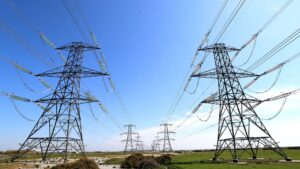
The energy price cap will be updated every three months from October under Ofgem proposals to pass on changes in wholesale prices to households more quickly.
The cap, which limits prices for 22 million households on standard tariffs or pre-payment meters, is updated every six months at present and rose by a record 54 per cent to almost £2,000 a year in April.
It is next due to be changed in October, when industry experts believe it could rise significantly because of high wholesale prices seen after Russia’s invasion of Ukraine.
Business briefingIn-depth analysis and comment on the latest financial and economic news from our award-winning Business teams.One-click sign up.
Under Ofgem’s proposals the cap would change in January and every three months thereafter.
“A more frequent price cap would reflect the most up to date and accurate energy prices and mean when prices fall from the current record highs, customers would see the benefit much sooner,” Ofgem said.
Ofgem is also proposing a technical change to the way the cap is calculated that could add up to £80 to the level of the price cap from October, in addition to wholesale price increases.
Scottish Power has predicted that bills could rise as high as £2,900 a year, including the impact of the technical change.
The price cap is set using historical wholesale prices, creating a time lag between market prices changing, with this being reflected in the cap.
This meant that households were shielded from the worst of the wholesale price rises seen last winter, which didn’t feed through to the cap until last month.
However, it also raises the prospect that when wholesale prices fall, consumers on price-capped tariffs will still be paying higher prices.
Wholesale prices have fallen significantly in the last month or so, but the price cap is still expected to rise in October because of the higher prices seen in February and March that are “baked in” through the price cap methodology.
Ofgem said that “the current method means that consumers are not able to reap the benefits of falling gas prices quickly enough”.
The preset methodology also creates problems for suppliers, as when prices rise sharply, more customers move onto price-capped tariffs, leaving them with higher-than-expected demand that they have to meet at high market prices, incurring losses.
When prices fall, those consumers may then switch away to cheaper fixed-price tariffs, leaving suppliers unable to recoup the higher energy costs they’ve already paid for.
There are concerns that this could lead to more companies collapsing after the failure of more than 30 since the start of last year, which has left behind a bill for consumers of billions of pounds.
Ofgem said that changing to quarterly updates would help to address this issue as suppliers would have a better idea how many price-capped customers they needed to buy energy for.
Jonathan Brearley, Ofgem chief executive, said: “Today’s proposed change would mean the price cap is more reflective of current market prices and any price falls would be delivered more quickly to consumers. It would also help energy suppliers better predict how much energy they need to purchase for their customers, reducing the risk of further supplier failures, which ultimately pushes up costs for consumers.
“The last year has shown that we need to make changes to the price cap so that suppliers are better able to manage risks in these unprecedented market conditions.”
Read more:
Ofgem to review energy price cap quarterly






